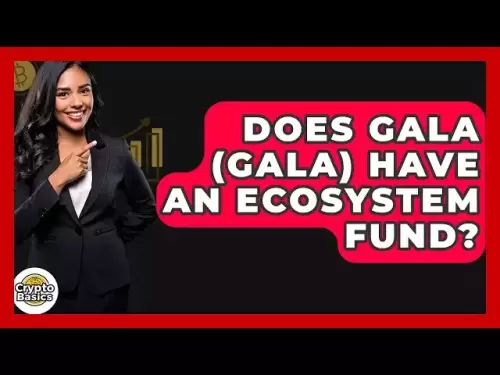-
 Bitcoin
Bitcoin $105,953.9980
3.06% -
 Ethereum
Ethereum $2,445.3292
6.68% -
 Tether USDt
Tether USDt $1.0006
-0.03% -
 XRP
XRP $2.1968
7.03% -
 BNB
BNB $643.2903
2.13% -
 Solana
Solana $144.2799
3.82% -
 USDC
USDC $1.0000
-0.03% -
 TRON
TRON $0.2739
0.49% -
 Dogecoin
Dogecoin $0.1642
4.47% -
 Cardano
Cardano $0.5834
5.49% -
 Hyperliquid
Hyperliquid $38.0741
2.80% -
 Sui
Sui $2.7741
7.56% -
 Chainlink
Chainlink $13.4107
11.26% -
 Bitcoin Cash
Bitcoin Cash $450.4828
-0.61% -
 UNUS SED LEO
UNUS SED LEO $9.1301
0.64% -
 Stellar
Stellar $0.2476
5.49% -
 Avalanche
Avalanche $18.0637
5.09% -
 Toncoin
Toncoin $2.9066
2.43% -
 Shiba Inu
Shiba Inu $0.0...01160
4.01% -
 Hedera
Hedera $0.1527
8.00% -
 Litecoin
Litecoin $84.6122
2.37% -
 Monero
Monero $317.6076
5.76% -
 Ethena USDe
Ethena USDe $1.0008
0.02% -
 Polkadot
Polkadot $3.4519
5.27% -
 Dai
Dai $1.0000
-0.03% -
 Bitget Token
Bitget Token $4.2835
5.62% -
 Uniswap
Uniswap $7.0443
9.78% -
 Pepe
Pepe $0.0...09964
7.41% -
 Pi
Pi $0.5391
4.64% -
 Aave
Aave $264.1743
11.26%
How to set stop loss and take profit in Bitcoin leverage trading?
Mastering Bitcoin leverage trading requires understanding stop-loss and take-profit orders, leveraging market analysis for precise order placement, and managing risks via position sizing and order types to mitigate slippage and fees.
Mar 24, 2025 at 02:42 pm
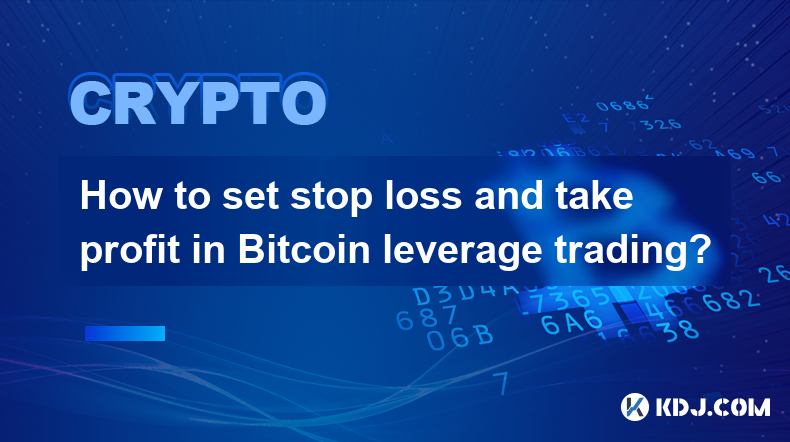
Key Points:
- Understanding leverage and its risks in Bitcoin trading.
- Defining stop-loss and take-profit orders and their importance.
- Setting appropriate stop-loss and take-profit levels based on market analysis.
- Utilizing different order types for stop-loss and take-profit execution.
- Managing risk effectively through proper order placement and position sizing.
- Considering the impact of slippage and fees on order execution.
How to Set Stop Loss and Take Profit in Bitcoin Leverage Trading?
Bitcoin leverage trading offers the potential for significant profits but also carries substantial risks. Understanding how to effectively use stop-loss and take-profit orders is crucial for managing these risks and protecting your capital. Leverage magnifies both gains and losses, so precise order placement is paramount.
Understanding Leverage and Risk
Leverage allows you to control a larger position than your capital would normally permit. For example, 5x leverage means you can control a position five times your investment. While this amplifies profits, it also amplifies losses. A small price movement against your position can quickly lead to significant losses, potentially exceeding your initial investment. This is why stop-loss orders are essential.
Defining Stop-Loss and Take-Profit Orders
A stop-loss order automatically sells your Bitcoin position when the price drops to a predetermined level, limiting potential losses. A take-profit order automatically sells your position when the price rises to a predetermined level, securing your profits. Both are crucial for managing risk and maximizing potential gains in volatile markets like Bitcoin.
Setting Stop-Loss Levels
Determining the appropriate stop-loss level requires careful market analysis. Consider factors like recent price volatility, support levels, and your risk tolerance. A common strategy is to place your stop-loss slightly below a recent support level or based on a percentage of your entry price (e.g., 5% below). Remember, the goal is to minimize losses, not necessarily to avoid all losses.
Setting Take-Profit Levels
Take-profit levels are set based on your profit targets. This depends on your trading strategy and risk appetite. You could set a take-profit based on a percentage gain (e.g., 10% above your entry price), a specific price level identified through technical analysis, or a combination of both. Remember, realizing profits is just as important as limiting losses.
Utilizing Different Order Types
- Market Orders: These orders execute immediately at the current market price. They are useful for quickly entering or exiting a trade but can result in slippage, especially during periods of high volatility.
- Limit Orders: These orders execute only when the price reaches your specified level. They offer better price control but there's no guarantee of execution.
- Stop-Limit Orders: These combine aspects of stop-loss and limit orders. The order triggers when the price hits the stop price, but it will only execute at or better than the limit price. This reduces the risk of slippage.
Managing Risk Through Position Sizing
Never risk more capital than you can afford to lose. Position sizing is crucial, especially with leverage. Calculate your position size based on your risk tolerance and the potential loss associated with your stop-loss level. Smaller position sizes reduce the impact of adverse price movements.
Impact of Slippage and Fees
Slippage is the difference between the expected price and the actual execution price of your order. It's more common during periods of high volatility. Fees also impact your overall profitability. Consider these factors when setting your stop-loss and take-profit levels. Account for slippage by setting your stop-loss slightly wider and your take-profit slightly narrower.
The Importance of Technical Analysis
Effective stop-loss and take-profit placement relies heavily on sound technical analysis. Studying charts, identifying support and resistance levels, and understanding price trends are crucial for informed decision-making. Tools like moving averages, RSI, and MACD can help identify potential entry and exit points.
Adapting to Market Conditions
The cryptocurrency market is highly dynamic. Your stop-loss and take-profit strategies should adapt to changing market conditions. What works in a trending market might not be suitable during periods of consolidation or high volatility. Regularly review and adjust your strategy as needed.
Using Trading Platforms and Tools
Most cryptocurrency exchanges offer tools to easily set stop-loss and take-profit orders. Familiarize yourself with the features of your chosen platform. Many platforms also offer advanced order types and charting tools to enhance your trading experience.
Common Questions:
Q: What happens if the price gaps through my stop-loss order?
A: Slippage can cause your stop-loss order to be filled at a less favorable price than anticipated, or even to be missed entirely if the price gaps significantly. Using stop-limit orders can mitigate this risk.
Q: How do I choose the right leverage for my trades?
A: The appropriate leverage depends on your risk tolerance and trading strategy. Start with lower leverage until you gain more experience and confidence. High leverage significantly magnifies both profits and losses.
Q: Can I modify my stop-loss and take-profit orders after placing them?
A: Most exchanges allow you to modify or cancel pending orders, but be aware of potential market changes that might affect your strategy. Frequent modifications can indicate a lack of a well-defined trading plan.
Q: What are the psychological aspects of using stop-loss orders?
A: Many traders struggle to stick to their stop-loss orders due to fear of missing out or hope that the price will recover. Developing a disciplined approach and sticking to your pre-defined plan is crucial for long-term success. Automated trading bots can help mitigate emotional decision-making.
Q: Are stop-loss and take-profit orders guaranteed to protect me from all losses?
A: No, these orders are tools to help manage risk, but they cannot eliminate all risk. Extreme market volatility or unforeseen events can still result in losses, even with stop-loss orders in place. Proper risk management requires a holistic approach.
Disclaimer:info@kdj.com
The information provided is not trading advice. kdj.com does not assume any responsibility for any investments made based on the information provided in this article. Cryptocurrencies are highly volatile and it is highly recommended that you invest with caution after thorough research!
If you believe that the content used on this website infringes your copyright, please contact us immediately (info@kdj.com) and we will delete it promptly.
- Bitcoin's Buy Pressure: Taker Volume Signals Next Move?
- 2025-06-25 02:25:12
- Cryptos, Web3, and AI: Navigating the Future of Digital Finance in 2025
- 2025-06-25 03:10:44
- Coinbase, Shares, and Stock: Riding the Crypto Wave
- 2025-06-25 02:45:12
- Coinbase (COIN) Shares Soar: What's Driving the Rally?
- 2025-06-25 02:30:13
- Web3 AI, Polkadot, and Crypto Gainers: Decoding the Future of Digital Assets
- 2025-06-25 03:10:44
- Pi's Technicals Flash Bull Signal: Is a Comeback to $1 in Sight?
- 2025-06-25 02:45:12
Related knowledge
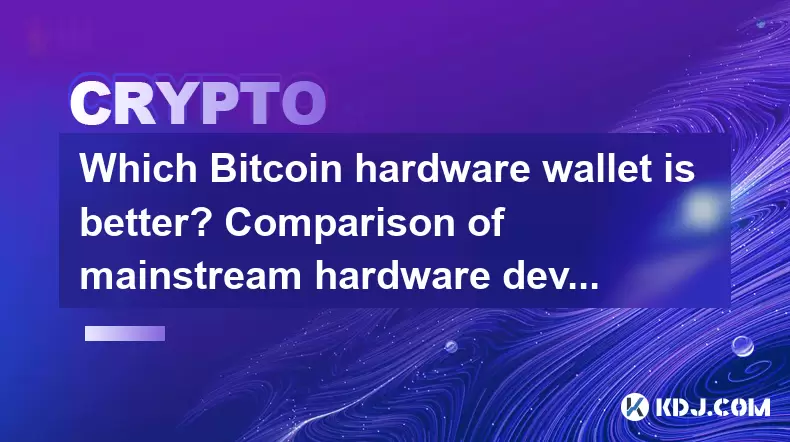
Which Bitcoin hardware wallet is better? Comparison of mainstream hardware devices
Jun 16,2025 at 02:08am
What Is a Bitcoin Hardware Wallet?A Bitcoin hardware wallet is a physical device designed to securely store the private keys associated with your cryptocurrency holdings. Unlike software wallets, which are more vulnerable to online threats, hardware wallets keep private keys offline, significantly reducing the risk of unauthorized access. These devices ...

What are Bitcoin non-custodial wallets? Self-controlled private key recommendation
Jun 16,2025 at 11:29pm
Understanding Bitcoin Non-Custodial WalletsA Bitcoin non-custodial wallet is a type of digital wallet where users retain full control over their private keys. Unlike custodial wallets, which are managed by third-party services such as exchanges, non-custodial wallets ensure that only the user can access and manage their funds. This means no intermediary...
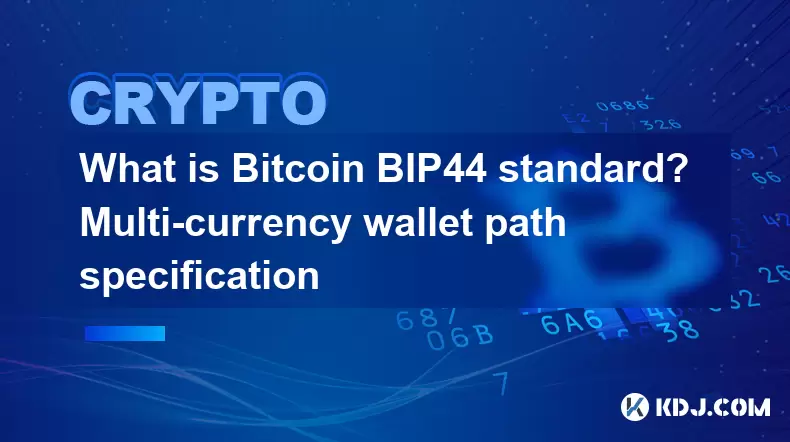
What is Bitcoin BIP44 standard? Multi-currency wallet path specification
Jun 15,2025 at 04:08pm
Understanding the BIP44 Standard in Bitcoin and CryptocurrencyThe BIP44 standard, which stands for Bitcoin Improvement Proposal 44, is a widely adopted hierarchical deterministic wallet structure used across various cryptocurrencies. It defines a structured path format that enables wallets to support multiple currencies while maintaining consistency and...

What is Bitcoin HD wallet? Advantages of layered deterministic wallets
Jun 16,2025 at 03:56pm
Understanding Bitcoin HD WalletsA Bitcoin HD wallet, or Hierarchical Deterministic wallet, is a type of cryptocurrency wallet that generates multiple keys and addresses from a single seed phrase. Unlike traditional wallets that create random private keys for each transaction, an HD wallet follows a structured hierarchy to derive keys in a deterministic ...
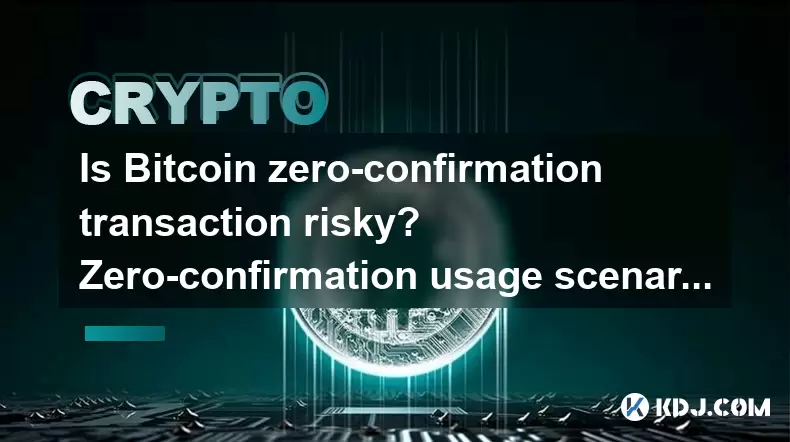
Is Bitcoin zero-confirmation transaction risky? Zero-confirmation usage scenarios
Jun 15,2025 at 03:57am
Understanding Zero-Confirmation Transactions in BitcoinBitcoin zero-confirmation transactions, often referred to as 'unconfirmed transactions,' are those that have been broadcast to the network but have not yet been included in a block. This means they have not received any confirmations from miners. While these transactions can be useful in certain con...
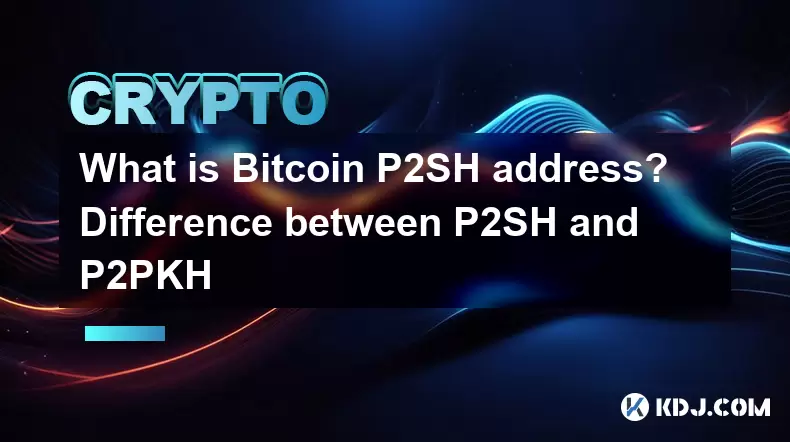
What is Bitcoin P2SH address? Difference between P2SH and P2PKH
Jun 16,2025 at 09:49pm
Understanding Bitcoin P2SH AddressesA Pay-to-Script-Hash (P2SH) address in the Bitcoin network is a type of address that allows users to send funds to a script hash rather than directly to a public key hash, as seen in earlier address formats. This innovation was introduced through BIP 16, enhancing flexibility and enabling more complex transaction type...

Which Bitcoin hardware wallet is better? Comparison of mainstream hardware devices
Jun 16,2025 at 02:08am
What Is a Bitcoin Hardware Wallet?A Bitcoin hardware wallet is a physical device designed to securely store the private keys associated with your cryptocurrency holdings. Unlike software wallets, which are more vulnerable to online threats, hardware wallets keep private keys offline, significantly reducing the risk of unauthorized access. These devices ...

What are Bitcoin non-custodial wallets? Self-controlled private key recommendation
Jun 16,2025 at 11:29pm
Understanding Bitcoin Non-Custodial WalletsA Bitcoin non-custodial wallet is a type of digital wallet where users retain full control over their private keys. Unlike custodial wallets, which are managed by third-party services such as exchanges, non-custodial wallets ensure that only the user can access and manage their funds. This means no intermediary...

What is Bitcoin BIP44 standard? Multi-currency wallet path specification
Jun 15,2025 at 04:08pm
Understanding the BIP44 Standard in Bitcoin and CryptocurrencyThe BIP44 standard, which stands for Bitcoin Improvement Proposal 44, is a widely adopted hierarchical deterministic wallet structure used across various cryptocurrencies. It defines a structured path format that enables wallets to support multiple currencies while maintaining consistency and...

What is Bitcoin HD wallet? Advantages of layered deterministic wallets
Jun 16,2025 at 03:56pm
Understanding Bitcoin HD WalletsA Bitcoin HD wallet, or Hierarchical Deterministic wallet, is a type of cryptocurrency wallet that generates multiple keys and addresses from a single seed phrase. Unlike traditional wallets that create random private keys for each transaction, an HD wallet follows a structured hierarchy to derive keys in a deterministic ...

Is Bitcoin zero-confirmation transaction risky? Zero-confirmation usage scenarios
Jun 15,2025 at 03:57am
Understanding Zero-Confirmation Transactions in BitcoinBitcoin zero-confirmation transactions, often referred to as 'unconfirmed transactions,' are those that have been broadcast to the network but have not yet been included in a block. This means they have not received any confirmations from miners. While these transactions can be useful in certain con...

What is Bitcoin P2SH address? Difference between P2SH and P2PKH
Jun 16,2025 at 09:49pm
Understanding Bitcoin P2SH AddressesA Pay-to-Script-Hash (P2SH) address in the Bitcoin network is a type of address that allows users to send funds to a script hash rather than directly to a public key hash, as seen in earlier address formats. This innovation was introduced through BIP 16, enhancing flexibility and enabling more complex transaction type...
See all articles




















